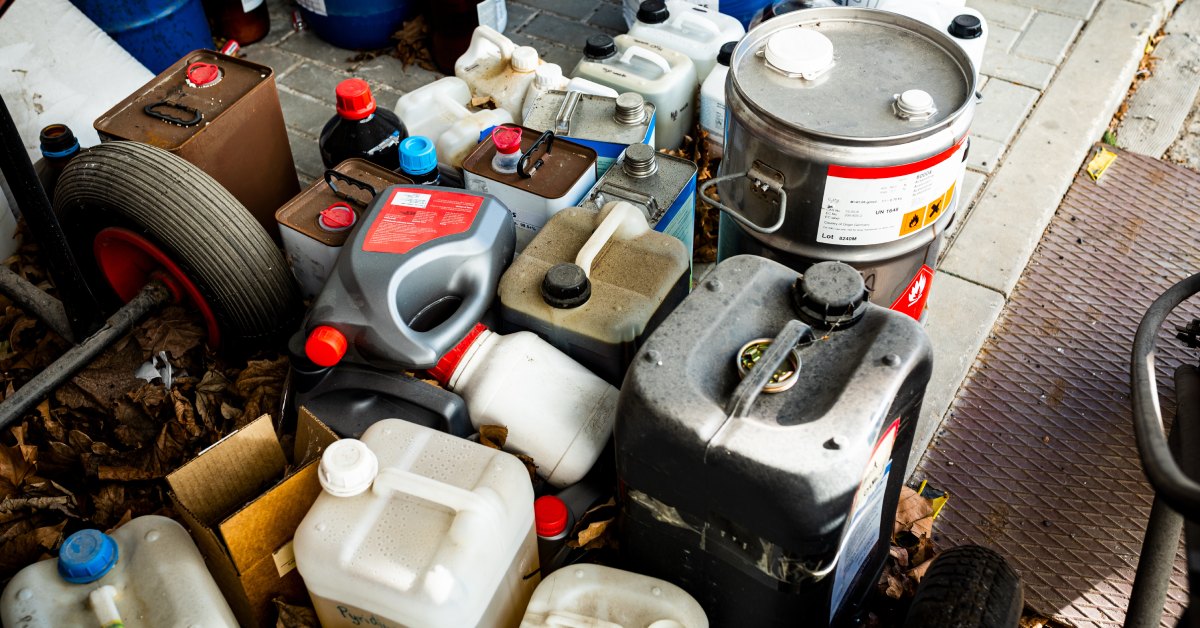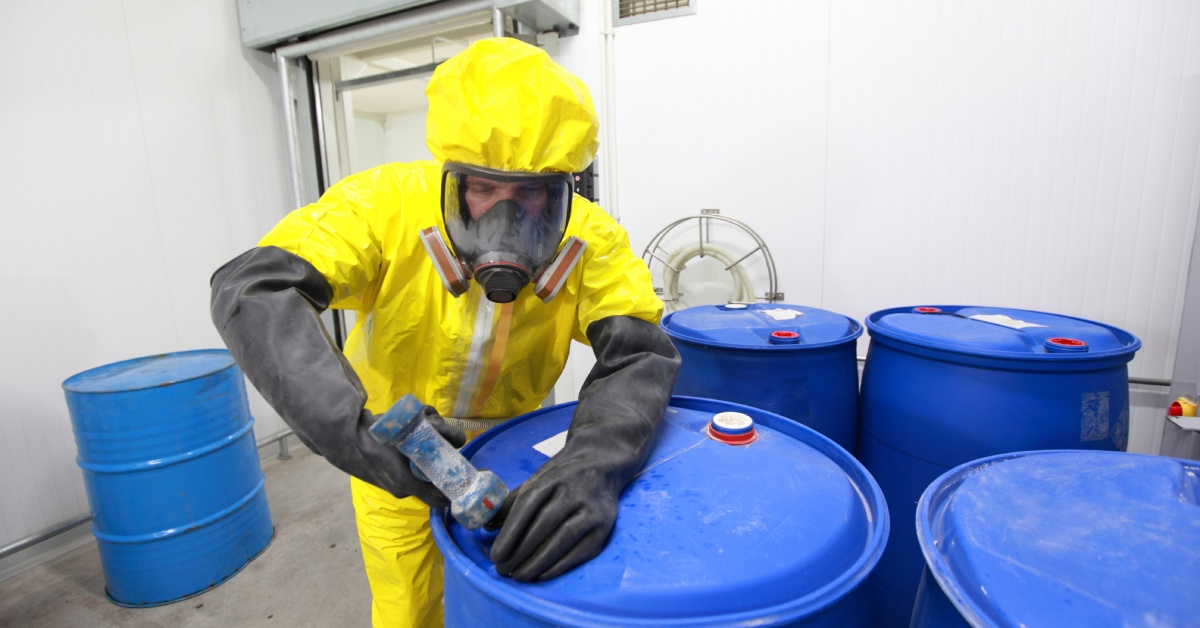It doesn’t matter what sort of business you operate; it will always generate waste. However, some businesses generate waste that qualifies as hazardous waste, meaning it is corrosive, toxic, reactive, or ignitable. Such materials can cause ill and even deadly effects on the environment, wildlife, and human beings. Therefore, you must properly handle and contain such waste. Every organization must understand the potential pitfalls in managing hazardous waste and the various common violations that may occur, which may lead to legal issues, environmental disasters, and injury and death. Here are seven common violations in hazardous waste management and the steps to take to prevent them.
Getting a Grip on Hazardous Waste
Governing bodies define hazardous waste by its potential to cause harm to life (whether human, plant, animal or all three) and the environment. Hazardous waste includes a range of materials, such as chemicals, paint, inorganic acids, specific industrial byproducts, and more. The Resource Conservation and Recovery Act (RCRA) classifies hazardous waste into categories, such as characteristic, listed, and mixed radiological waste. Understanding these classifications is the first step for businesses to prevent violations.
- Characteristic waste exhibits the above-mentioned properties of ignitability, corrosivity, reactivity, or toxicity.
- Listed waste stems from specific industries or activities, as defined by the U.S. Environmental Protection Agency (EPA).
- Mixed Radiological Waste contains hazardous and radioactive components, requiring dual regulation.
Several different violations may spring up with so many types of hazardous waste to consider. Keep reading!

Common Violations in Hazardous Waste Management
Navigating the complexities of hazardous waste management can be challenging, leading to several common violations, such as:
Improper Waste Identification
Failure to correctly identify hazardous waste is a prevalent issue. Businesses often misclassify waste due to oversight or misunderstanding of regulations. This misclassification may lead to improper handling, storage, and disposal, resulting in regulatory penalties.
Inadequate Labeling and Documentation
Proper labeling and documentation are crucial for tracking hazardous waste from generation to disposal. Failure to maintain accurate records or to label waste containers correctly leads to serious violations. Businesses must ensure they clearly label all waste with the waste type, the generation date, and any hazard warnings.
Insufficient Training for Employees
Employees must receive adequate training in handling, storage, emergency response procedures, and proper use of tools and equipment if they manage hazardous waste. Inadequate training may result in mishandling of waste and noncompliance with safety regulations, leading to potential health risks and environmental harm, fines, and insurance problems.
Noncompliance With Storage Regulations
Strict regulations are in place regarding hazardous waste storage to prevent leaks and contamination. Common violations include exceeding storage time limits, improper containment, and failure to regularly inspect storage areas. Businesses must adhere to regulations regarding the type and duration of waste storage.
Improper Disposal Practices
Perhaps the most widely known violation, improper disposal of hazardous waste is a significant violation that creates severe environmental consequences. Illegitimate and less scrupulous businesses may attempt to cut costs by disposing of waste in illegal and unsafe ways, leading to land and water contamination and putting lives at risk. Partnering with a reputable hazardous waste disposal company ensures competent, compliant, and safe disposal practices.
Failure To Report a Release
Timely reporting of hazardous waste releases is a critical regulatory requirement. Failure to report a release may be due to unawareness or a straightforward attempt to avoid penalties, which can induce more severe consequences. Prompt reporting is essential for initiating an immediate response and minimizing environmental damage. As mentioned above, all organizations must establish clear protocols for incident reporting and ensure you educate and train staff in these procedures.
Inadequate Emergency Preparedness
Emergency preparedness entails having a comprehensive plan in place to address potential incidents involving hazardous waste. Many businesses overlook this or maintain outdated plans, failing to comply with current regulations. Violations occur when businesses fail to develop, implement, or regularly update their emergency response plans. Proper emergency preparedness includes conducting regular drills, maintaining up-to-date contact information for key response personnel, and ensuring the availability of emergency equipment.
Steps To Ensure Compliance
Now that you know the violations, here’s what to do to effectively manage hazardous waste and avoid them. Businesses should implement a robust compliance strategy, including the following activities:
Conduct Regular Audits
What’s the status of waste in your facility and how do you handle it? Routine audits of waste management processes identify areas of noncompliance and potential risks. Audits should include re-assessing waste identification procedures, record-keeping, and storage facilities to ensure adherence to regulations.
Invest in Employee Training
We cannot overstate the importance of employee training. Your employees are the first line of defense against a disaster occurring. Providing comprehensive training for employees involved in hazardous waste management is crucial. Training programs must cover waste identification, handling, emergency response, and proper use of personal protective equipment (PPE). Regular refresher courses update employees on new regulations and best practices.
Partner With Experts
Not sure if you know enough to establish procedures. Working hazardous waste experts who possess specialized knowledge, tools, and services. For example, Clean Management Environmental Group offers personalized support, competitive pricing, and comprehensive waste disposal services to help you stay compliant.
Implement a Robust Documentation System
Knowledge is power. Maintain an organized documentation system to track waste, keeping detailed records of waste generation, storage, transportation, and disposal activities. This documentation aids in regulatory reporting and helps demonstrate compliance. It could also save you legal troubles if you can prove you followed protocol to the letter, should an issue arise.

Monitor and Adapt to Regulations
Change is the only constant. Environmental regulations are continually evolving, and you must stay on top of them to remain adaptable and ready to react in an emergency or other situation. Keeping abreast of changes in hazardous waste management regulations allows businesses to adjust their practices accordingly and maintain compliance.
Foster a Culture of Environmental Responsibility
Educating employees in emergency procedures is good but keeping them apprised of why they do what they do is important. Developing a company-wide culture that prioritizes environmental responsibility significantly enhances compliance. Encourage all employees to actively participate in waste reduction initiatives and improve reporting mechanisms for potential violations. Ask them for input on improving things even more, based on their experience. By promoting awareness and responsibility, businesses ensure every team member commits themselves to sustainable and compliant waste management practices.
Establish Clear Communication Channels
Keep people talking with one another, and let employees know they are heard. Ensuring clear communication channels within the organization is a big necessity for effective hazardous waste management. Create a structured system to report potential issues, share updates on regulatory changes, and disseminate best practices among employees. Regular meetings and open forums foster transparency, encourage dialogue, and ensure all staff members are informed and aligned with the company’s waste management policies.
Those are seven common violations in hazardous waste management, in addition to seven steps to prevent them from happening. Businesses can mitigate risks and improve their waste management processes by understanding common violations and implementing best practices. Need help? Contact us for a consultation. Clean Management Environmental Group offers comprehensive solutions tailored to meet your business’s unique needs, helping you achieve compliance and environmental responsibility!


